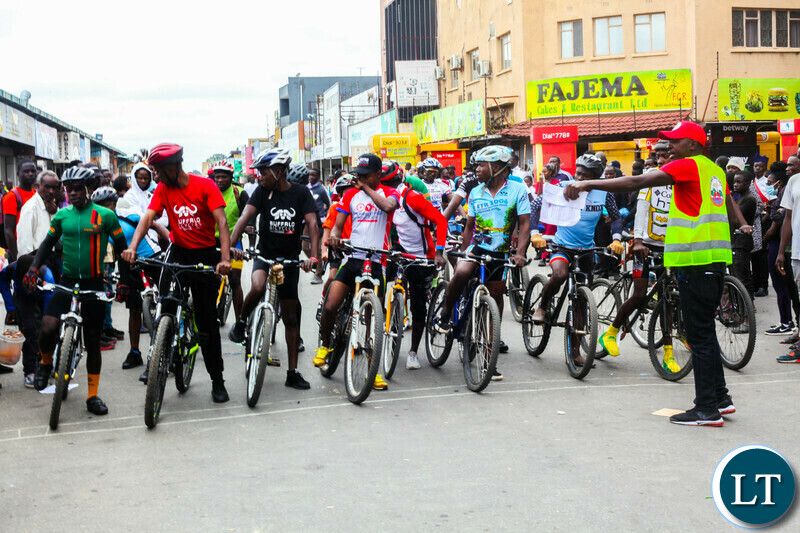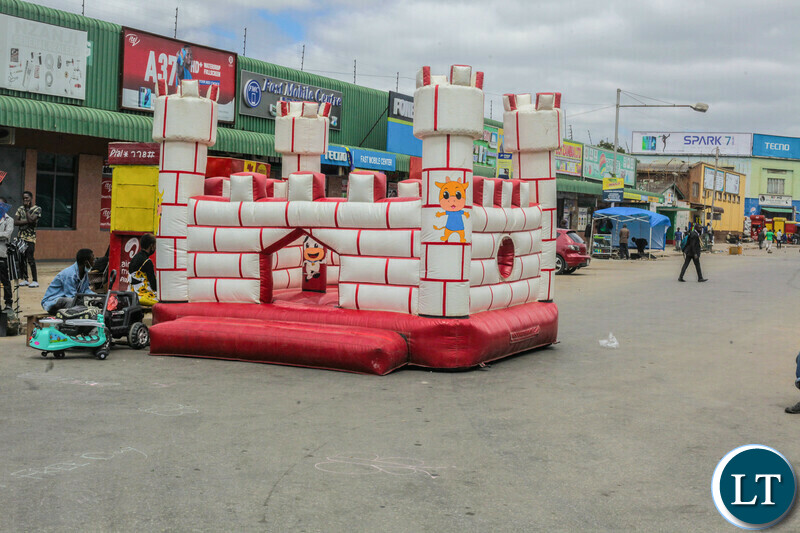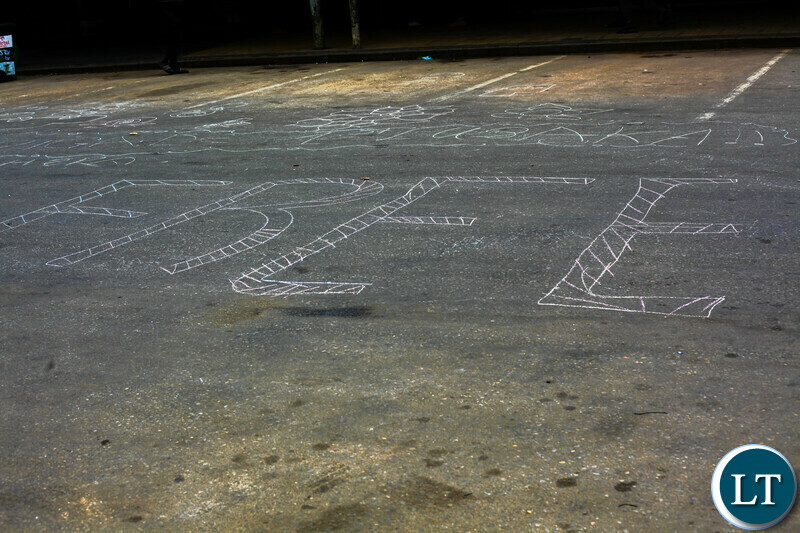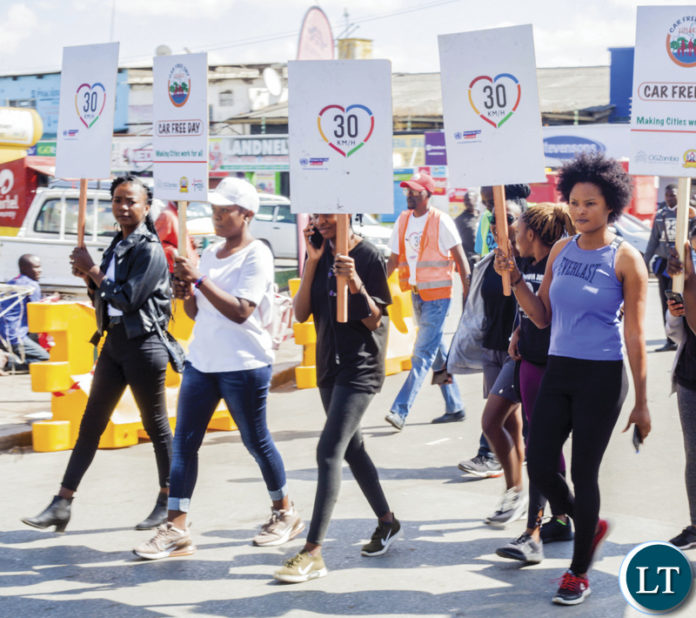Zambia is at a pivotal moment in urban transport planning, but huge opportunities could easily be lost. At present, even the capital, Lusaka, is still relatively compact, with a population of around three million. Congestion is growing fast, but does not yet define life in towns and cities of Zambia.
However, with one of the fastest-growing urban populations in sub-Saharan Africa, Zambian cities are expanding and transport infrastructure is struggling to keep up. At a landslide election on 12th August 2021, Zambians chose a new President, His Excellency Hakainde Hichilema. Urban pollution and gridlock is not inevitable in urban Zambia, but the choices and investments the new President and his government make will set a course towards, or away from, this hugely damaging scenario, which is already so familiar across the continent.
The Zambia Road Safety Trust (ZRST) is working to promote safe and sustainable urban spaces where walking and cycling routes are prioritised and traffic speeds are lowered so that roads can be a safe space for all.

Alternatives to ‘predict and provide’
By 2050 the UN predicts there will be 40 million Zambians, more than double the population today, and most of these people will be living in cities.(1) Zambia is also experiencing a huge growth in the number of motor vehicles. Between 2006 and 2019, the motor vehicle fleet in Zambia increased by 388% to 823,000.
This has resulted in a tendency to plan for car-dominated cities. Policy-makers easily overlook that, despite the growth, only 10% of all trips are by private car.(2) Most Zambians travel by foot or by bike and these citizens are the most vulnerable to injury on the road. Road deaths and
injuries are a growing problem in Zambia; in 2019, 1,746 road deaths were reported (3),although the World Health Organization estimates the figure may be closer to 3,500. Road deaths and injuries are not an inevitable consequence of urban development; rather, they are utterly tragic, largely avoidable and economically costly.
Adapting to fast-growing cities and urban traffic is, of course, challenging. Over the last decade, the Zambian government has spent considerably on road building, including in Lusaka, where a $289 million decongestion project has seen road widening and the construction of flyovers across the city.(4)
In 2020, Zambia was in recession due to unsustainable public debt and the impacts of the Covid-19 pandemic. Real GDP contracted by an estimated 4.9% in 2020 and Zambia’s public debt increased to 104% of GDP.5 The new government will struggle to continue to invest in large road-building projects. Nor does it necessarily need to. More creative solutions to transport planning that consider the needs of all citizens are now needed more than ever, and these solutions will be cheaper than flagship and expensive concrete-pouring infrastructure projects.

Supporting walking and cycling
The ZRST has written an open letter to the new President calling for a focus on road safety and investment in facilities for non-motorised transport. Effective non-motorised transport systems have been shown to promote economic prosperity and more efficient and less polluted cities. With relatively modest investment, Zambia could reap significant returns. No single initiative will realise these opportunities, but the ZRST presents three initiatives.
Zambia actually already has a comprehensive Non-motorised Transport Strategy (6) setting out recommendations for all new roads, and whilst some limited progress has been made it now needs to be implemented. The newer roads in Lusaka, while still allocating most space to vehicles, do at least include pavements.
In the city of Chipata in Eastern Zambia, there has long been a strong cycling culture and the city boasts wide, fully segregated cycle lanes on the main roads.
New low-energy and solar-powered street lighting is being installed in Lusaka making it safer to walk and cycle at night. Implementing Zambia’s Non-motorised Transport Strategy will help build more inclusive, less congested and more efficient cities. It is an exciting opportunity that could easily be squandered.
In 2019, a regulation for 30km/h limits in urban areas was adopted nationally. ZRST had a leading role in advocating for this important change and, although there are considerable challenges in implementing the regulation, ZRST is working directly with schools to implement infrastructure that helps enforce lower speeds. To date, 11 school zones in Lusaka have been rehabilitated with speed-calming measures. Given that 10% of all road deaths in Zambia are among children, this is life-saving work, and ZRST continues to expand school zones across the country.
In 2021, ZRST organised the first car-free days in Zambia, in Lusaka’s central business district. This was an opportunity for people to enjoy and experience public spaces of their city without motor vehicles. The days demonstrated just how much safer, liveable and efficient urban space can be. By expanding car-free days,
Lusaka could join a growing club of global cities where citizens and policy-makers are demonstrating that relentless road expansion is not necessarily the most effective solution to promote modern and vibrant cites.

Model for African cities
Many cities in Europe and North America struggle with the costly legacies of car-dominated urban design. There is a huge opportunity in Zambia now to plan holistically and avoid a trap of polluted, congested cities, by promoting the vital contribution of walking and cycling to the long-term sustainability of cities and their economies. It will never be possible to widen urban roads sufficiently to keep up with demand. This ‘predict and provide’ method has been proven again and again to lead, in fact, to more traffic and more congestion.(7) Prioritising non-motorised modes offers a much more efficient way of using the increasingly scarce space within growing cities.
During the Covid-19 pandemic, cities across the world have found opportunities to reallocate road space quickly and cheaply to pedestrians and cyclists, as a way of facilitating social distancing – for example, within a few months of the onset of the pandemic Bogota, capital of Columbia, introduced 80km of new temporary cycle lanes.(8) Examples like this have shown how quickly and cheaply change can be implemented.
Zambia’s new government could realize huge benefits by committing to implement Zambia’s Non-motorised Transport Strategy, with an emphasis on speed management, wider pavements and segregated cycle lanes. The good news is that these solutions have all been tried and tested. There is no need to wait for new technologies; the answers are already here. With the right political will, community engagement and stakeholder commitment, Zambia has a real opportunity to become a model of sustainable and equitable urban growth across Africa and beyond.
Ruth Salmon
Independent Transport Consultant
[email protected]Daniel Mwamba
Chairman,
Zambia Road Safety Trust
[email protected]References
1. https://worldpopulationreview.com/countries/zambiapopulation
2. Zambia Non-motorised Transport Strategy, 2019,www.unep.org/resources/policy-and-strategy/zambianon-motorised-transport-strategy
3. RTSA 2019 Annual Road Traffic Crash Report
4. www.lusakatimes.com/2021/02/16/lusaka-decongestionproject-elates-ps/
5. www.afdb.org/en/countries-southern-africazambia/zambia-economic-outlook
6. www.unep.org/resources/policy-and-strategy/zambianon-motorised-transport-strategy
7. www.researchgate.net/publication/260110728_Beyond_’predict_and_provide’_UK_transport_the_growth_para
digm_and_climate_change
8. www.uci.org/news/2020/pop-up-bike-lanes-a-rapidlygrowing-transport-solution-prompted-by-coronavirus-pandemic



$exxy women…
What other comments do you want.
Now this is the kind of thinking we should all applaud. People are believing once more that the brilliant ideas they would have not wasted a minute to bring up in the previous regime are now possible.
Please catch up with the world when doing up roads because the ones done so far are still about 2 decades outdated.
Modern normal roads have the following main features:-
1) Clearly marked posters for direction. That in itself a big industries and please give it to local contractors.
2) Bus/Taxi/ Public transport lanes.
3) Hard shoulders – used in case of breakdowns and other emergencies.
4) Foot/Scooter/Bicycle lanes on both sides of the roads in cities and residential areas.
Encourage councils to start projects like “Lusaka bikes”. This is where you do bike sharing schemes by having different locations with bikes for people to get bikes, ride to work or where ever and return it at a different designated place and people will charged on their membership cards…
More walking and cycling – excellent!
#plant a tree now!
Brilliant stuff
PF just spent billions on roads that are not only unfriendly for cycling and walking but actually dangerous. In this new dispensation, engineering association of zambia needs to be held accountable for failing to speak out at the poor quality roads built by PF. They have no cycling lanes, narrow no or blocked pathways by lighting etc. O sorry. some of their members were beneficiaries of the PF corruption
Thanks for this initiative! WE NEED TO MOVE WITH TIMES AND OVERALL WE NEED TO RE-PLAN LUSAKA BY TAKING OVER SOME SHANTIES AND MODERNISING THEM WITH THESE PROPOSED MODERN ROADS THAT ARE FULLY FURNISHED WITH TREES TO MAKE WALKING AND CYCLING SAFE AND PLEASANT EXPERIENCES OR WE CAN START PLANNING A NEW CAPITAL CITY ALL TOGETHER TO ENSURE MODERNITY IS AT THE CORE OF THE NEW CITY!!
All those potholes in Matero and you want me to walk?
Majority of Lusakans live in poor areas like Chibolya,Misisi ,Kalingalinga,Matero etc and they don’t have such cycling/walking infrastructure.
The road built through the flood plain from Mongu to Kalabo, 98% of the people there walk or cycle and the road has no walkways or cycling lanes. Surely how closed minded can you be not to think about that. People carrying heavy merchandise are then forced to dangerously share the road with speeding cars. This country really surprises me.
In 2021 all these new residential development areas in LSK have no house number demarcations and people selling the houses are forced to identify them by the nearest landmark like petrol station; restaurant or school. Who is Planning? Come people, we can do better than this.
The road built through the flood plain from Mongu to Kalabo, 98% of the people there walk or cycle and the road has no walkways or cycling lanes. Surely how closed minded can you be not to think about that. People carrying heavy merchandise are then forced to dangerously share the road with speeding cars. This country really surprises me.
In 2021 all these new residential development areas in LSK have no house number demarcations and people selling the houses are forced to identify them by the nearest landmark like petrol station; restaurant or school. Who is Planning? Come people, we can do better than this as a country.
Very good initiative. But the focus is solely on Lusaka, while ALL rural roads don’t have any footpaths or cycle lanes – and 98% of people movements are by foot or bike. Edgar China Lungu was so proud of his flyovers in Lusaka – but none of them has ANY facilities for pedestrians or cyclists. And when asked he said that those people should buy a car! That’s the real problem: Zambian’s elite drives cars and doesn’t realize that 98% of Zambians does NOT own a car.
Comments are closed.